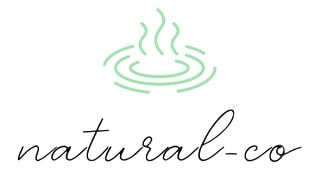Business Model Design — Turning Hot Spring Insights into Sustainable Growth
- Business Model Design — Turning Hot Spring Insights into Sustainable Growth
- 1. Why Business Model Design Matters
- 2. The Four Pillars of a Modern Hot Spring Business
- 3. Evolving Business Models in the Hot Spring Industry
- 4. From Insights to Design: Applying the Natural-Co Tools
- 5. How to Build a Sustainable Growth Loop
- 6. Case Study: The “Thermal Village” Concept
- 7. Designing for the Future
Every successful wellness resort starts with an idea — but only those with a solid business model last.
In the hot spring industry, where nature meets hospitality, strategy must flow as naturally as water itself.
After exploring market trends, senior demand, and competitor insights, it’s time to translate all those observations into something tangible: a business model that grows, adapts, and sustains value.
1. Why Business Model Design Matters
Hot spring businesses often start with passion — a beautiful location, healing water, and a loyal customer base.
But passion alone doesn’t scale.
Today’s investors and operators face complex questions:
-
How do you balance tradition with innovation?
-
How do you maintain profitability while protecting nature?
-
How can technology make your resort more efficient — not less human?
A well-designed business model answers all three by connecting experience, economics, and ecology.
2. The Four Pillars of a Modern Hot Spring Business
| Pillar | Description | Example Application |
|---|---|---|
| Experience Design | Build immersive, authentic guest experiences. | Curated local rituals, digital storytelling, personalized wellness plans. |
| Revenue Diversification | Move beyond ticket sales and room rates. | Memberships, long-stay wellness programs, partnerships with medical clinics. |
| Sustainability Integration | Make eco-efficiency part of brand value. | Geothermal energy reuse, zero-waste operations, carbon-neutral certification. |
| Digital Transformation | Use AI and data to guide operations. | Smart booking, sentiment analysis, predictive maintenance, occupancy forecasting. |
A strong model connects emotional value with measurable performance.
3. Evolving Business Models in the Hot Spring Industry
| Model Type | How It Works | Best For |
|---|---|---|
| Traditional Spa Model | Entry fee + accommodation + add-on therapy | Local, heritage resorts |
| Wellness Membership Model | Subscription access, loyalty rewards, personal data tracking | Urban or repeat guests |
| Medical-Wellness Hybrid | Integrates doctors, therapists, and recovery programs | Aging population markets |
| Eco-Luxury Destination | Focus on sustainability, design, and exclusivity | Global luxury travelers |
| Community-Based Resort | Local co-ownership and shared profits | Regional development projects |
Each of these models can succeed — if aligned with audience insight and regional demand. The right model isn’t just about what you sell, but why people return.
4. From Insights to Design: Applying the Natural-Co Tools
Natural-Co’s suite of AI-driven tools helps you design data-backed business strategies:
-
Market Trends Tool → Identify growing regions and investment opportunities.
-
Senior Demand Analysis → Tailor offerings to high-value, long-stay travelers.
-
Competitor Insights → Benchmark and differentiate your concept.
-
Business Model Design Tool → Combine all data to test financial sustainability and customer fit.
With these tools, operators can simulate market conditions, estimate ROI, and validate their concepts before investing millions in construction.
5. How to Build a Sustainable Growth Loop
-
Start with Data – Understand who your audience is and where demand is rising.
-
Define Your Core Value – What’s the emotional promise behind your resort? Healing, culture, or connection?
-
Prototype Your Model – Use small-scale trials or pilot memberships before scaling.
-
Monitor and Adapt – Use analytics to track performance and adjust in real time.
-
Invest in People and Place – Sustainable growth depends on community trust as much as financial return.
The best hot spring models are not static—they evolve with the market, just like water finds new paths.
6. Case Study: The “Thermal Village” Concept
A European spa group recently restructured its operations into a “Thermal Village” model:
-
Residents live on-site for 2–6 months.
-
The resort runs medical, culinary, and cultural programs.
-
Data from the Natural-Co-style system predicts occupancy and optimizes pricing.
The result: a 15% increase in retention and 30% higher average revenue per guest, achieved without expanding physical capacity.
This approach proves that innovation is not always about expansion — sometimes it’s about deepening value.
7. Designing for the Future
The next decade will reward hot spring businesses that align human wellness with environmental and digital intelligence.
Whether your resort serves local communities or international travelers, a strong model balances:
-
Profit with purpose
-
Comfort with consciousness
-
Technology with touch
And that’s what makes it sustainable — not just financially, but culturally and ecologically.
The hot spring business of the future isn’t about who builds the biggest spa — it’s about who builds the most balanced one.

